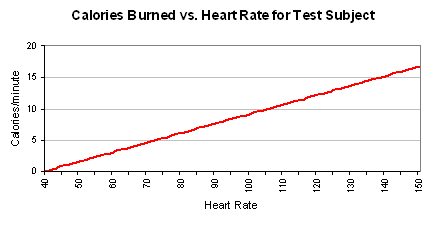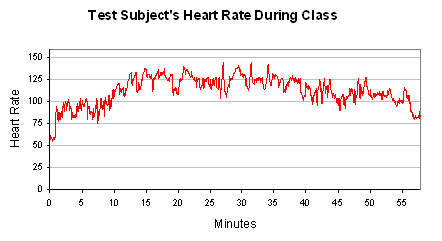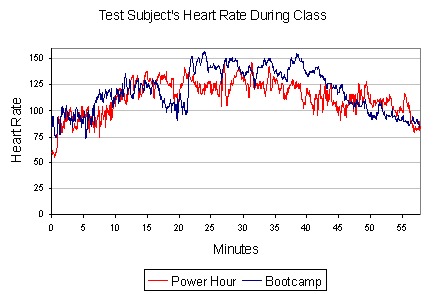Calories burned doing hot yoga.
A common question we get is whether the hot studio actually causes you to burn calories faster. In other words, does hot yoga burn calories faster than other types of yoga?
To burn calories, your body requires oxygen. The harder the exercise, the more oxygen you require and the harder you breathe. In fact, one of the best ways to measure metabolism and how many calories your body burns during an activity is to measure how much oxygen you inhale and how much carbon dioxide you exhale. The more oxygen consumed by your body, the more calories burned.
So the question is – does a hot room make you breathe harder and burn more calories? The answer is “Not so much”. Your heart does need to work a little harder to keep your muscles oxygenated in a hot room and to pump extra blood to your skin’s surface, so you do breathe a little harder, but the amount of extra calories burned is relatively modest compared to other types of exercise. One study showed that women kept in a respiration chamber at 81F burned about 10 calories more an hour than women kept in the chamber at 71.6F. This also explains why you can’t get skinny sitting in a sauna. You can lose temporary water weight, but you simply aren’t burning a significant amount of calories.
In our studio, we use heat to supplement the yoga while relying on a vigorous vinyasa flow to create sweat from physical exertion, not from the ambient room temperature. The room temperature is typically set at 85F, hot enough to aid in stretching and shaping muscles, but not so hot that it becomes a distraction to your practice. It’s not uncommon for the room to heat up to 90F however, based on the body heat generated by the class.
Calories burned doing power yoga.
In doing power yoga, you will find that you do breathe harder, exert more energy, and burn more calories than in a regular yoga class regardless of whether it is heated or not. To test how many calories are burned during our power yoga classes, we decided to do a little research using a heart rate monitor we purchased for the studio.
As mentioned above, oxygen is required to burn calories – the more you breathe in, the more you burn. It turns out that your heart rate is directly related to how much oxygen you consume and calories you burn. In fact, there is roughly a linear relationship between heart rate and calories burned, though this linear relationship varies between people based on their age, weight, and gender.
One group of researchers estimated the parameters for this equation, publishing in the Journal of Sports Science the following formulas for determining the calories burned per minute:
Male: C/min = (-55.0969 + 0.6309 x heart rate + 0.1988 x weight + 0.2017 x age) / 4.184
Female: C/min = (-20.4022 + 0.4472 x heart rate – 0.1263 x weight + 0.074 x age) / 4.184
where weight is in kilograms and C is kilo-calories, which is what nutritionists refer to when talking about the calorie content of food. When your treadmill or runner’s watch gives you an estimate of the calories you are burning, it is using this or a variation of this formula. Applying this formula to a 235 lb, 44 year-old male test subject results in the following relationship between heart rate and calories burned per minute:

We then strapped a heart rate monitor to the test subject’s chest and subjected him to a 60 minute Power Hour class. The following chart illustrates the subject’s heart rate during the class, measured in 2 second intervals:

From these two pieces of information, we can then calculate the approximate calories burned during each 2 second increment and determine that our test subject burned approximately 650 calories during the power yoga class.
We can use this same technique to examine calories burned in other yoga classes. We strapped the heart rate monitor on our test subject again and sent him to one of our YOGA BODY BOOTCAMP classes. The chart below compares his heart rate between the two classes. The Power Hour heart rates are in red while the YOGA BODY BOOTCAMP ones are in blue.

Notice how during the first 20 minutes of class, the heart rates are very similar. This is because both classes begin with very similar vinyasa flows. After approximately 20 minutes, the YOGA BODY BOOTCAMP class diverges into four circuits of five stations. Included in each circuit is a balance station during which heart rate drops. These four circuits are visible in the four blue colored humps in the data after the 20 minute mark. Using this data and our formulas for measuring calories burned, we find our test subject burned approximately 705 calories during the class. For this test subject, the YOGA BODY BOOTCAMP class burned about 8.6% more calories than a regular power yoga class.
To estimate how many calories you would burn during one of our classes, please visit our Yoga Calorie Calculator.

You must be logged in to post a comment.